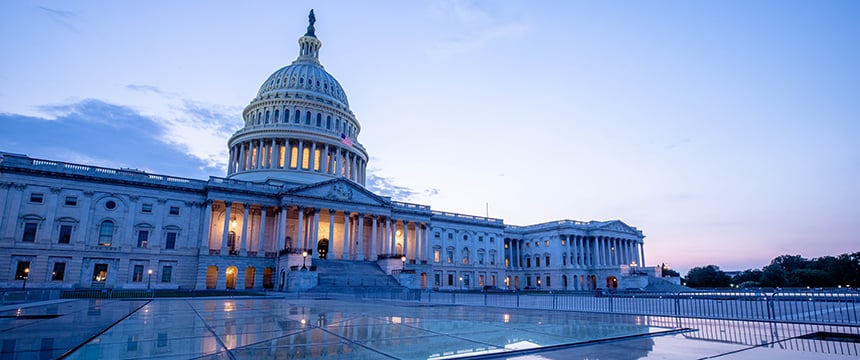
What follows is an update to our August 9, 2021 article, Top Ten: What You Need to Know About the Bipartisan Infrastructure Investment and Jobs Act.
This past Monday, November 15th, 2021, President Biden signed into law H.R. 3684, the Infrastructure Investment and Jobs Act, known colloquially as the bipartisan infrastructure bill. The $1.2 trillion bill includes $550 billion of new spending centered on roads, bridges, railroads, water infrastructure, expanding broadband access, updating the electric grid, improving public transit, and creating a network of electric vehicle chargers. The Biden Administration has divided up their infrastructure investment into two bills, with the bipartisan infrastructure bill covering traditional infrastructure and the Build Back Better Act covering social infrastructure.
Broadband Access
A key priority of the Biden Administration has been to improve internet access nationwide. In the bipartisan infrastructure bill $65 billion in funding is allocated towards expanding broadband access, about $42 billion of which goes toward the newly-created Broadband Equity, Access, and Deployment Program. This program will be managed through the National Telecommunications and Information Administration. A key stipulation exists within this funding provision, in which states that accept this grant money must agree to develop a low-cost broadband option for qualifying families. It has been left up to the states to determine what a low-cost option would look like and who would qualify.
To improve internet access equity, the bill allocates $14 billion toward extension and expansion of the Emergency Broadband Benefit Program. This program was created in the midst of the pandemic and assists households struggling to afford internet service. Additional provisions include $2.75 billion toward digital inclusion efforts, including the State Digital Equity Capacity Grant Program and the Digital Equity Competitive Grant Program, both of which were defined under the Digital Equity Act of 2021. These programs aim to provide digital skills training and education, while also increasing online accessibility to rural communities and communities that are unable to access the internet.
Electric Vehicle Charging Stations
To combat climate change and replace outdated infrastructure, the bill calls for $7.5 billion in investment toward electric vehicle charging stations. The funding will be implemented through the Surface Transportation Block Grant program, meant to send money to states to partner with local entities to create these charging stations. This grant program represents an excellent opportunity for states to form public-private partnerships to reduce their carbon emissions. On the basis of reducing carbon emissions, the bill also provides $2.5 billion to replace aging school buses for modern zero-emission buses.
Carbon Capture
Additional provisions aimed to lessen carbon emissions include $3.5 billion for carbon capture projects. Further provisions establish the CO2 Infrastructure Finance and Innovation Act (CIFIA) program, originally introduced by Sen. Chris Coons (D-DE). Based on previous programs for highway and water infrastructure, the CIFIA would provide low-interest loans for carbon dioxide transport infrastructure projects. The bipartisan infrastructure bill has allocated $2.1 billion for this program.
Supply Chains
The infrastructure bill has various provisions designed to combat supply chain woes through improvements toward aging infrastructure. The bill invests $17 billion into port and waterways infrastructure and $25 billion into airports to reduce congestion and modernize infrastructure.
Roughly $3.5 billion is allocated for ports through the General Services Administration to build and repair Customs and Border Protection stations and land ports-of-entry, and an additional $2.25 billion is allocated for the Maritime Administration’s port infrastructure development program. Following passage of the bill, the Biden Administration outlined $8.5 billion in short-term plans to provide funding through the Port Infrastructure Development Grant program, projects for the U.S. Army Corps of Engineers, and an open competition for port infrastructure grants through the Department of Transportation.
Conclusion
The bipartisan infrastructure bill has a heavy focus on traditional infrastructure related to logistic networks. The aim of the bill is investment into physical infrastructure with a goal of revitalizing American business in the wake of the COVID-19 pandemic. The Build Back Better Act is anticipated to have significant investment into expansion of healthcare, housing, childcare, and education, while also funding efforts to fight climate change. Congress is currently debating the Build Back Better Act as moderate Democrats await a report from the nonpartisan Congressional Budget Office. House Democrats have expressed confidence that the bill will be brought to a vote no later than the week of November 15th.

